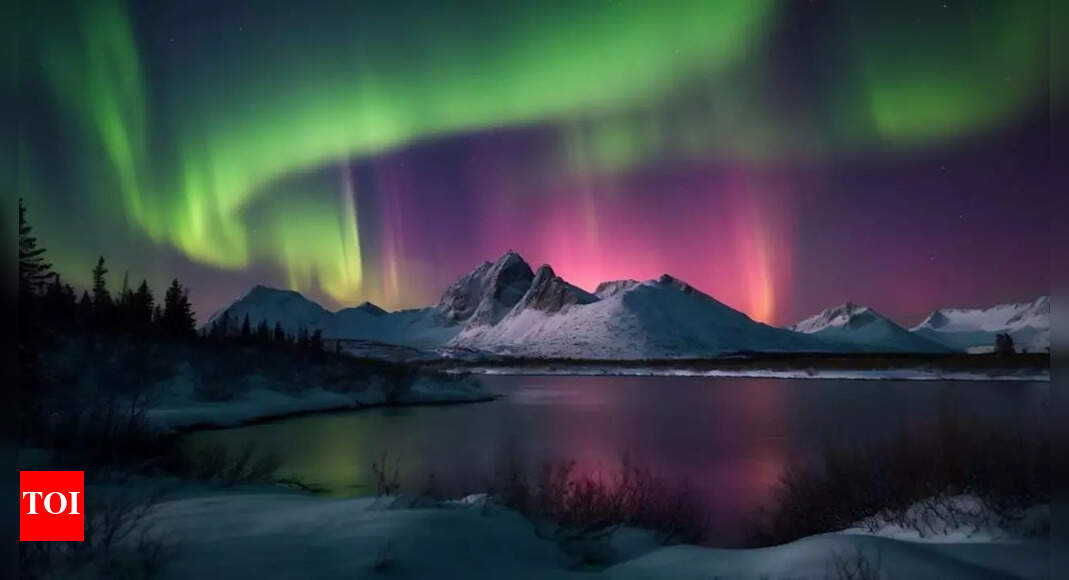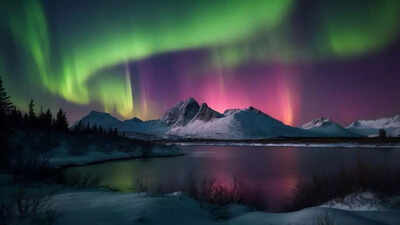
The night sky is set to deliver a breathtaking spectacle this week, with the Northern Lights and the dazzling “Autumn Star” lighting up the heavens. Following the fall equinox, auroral activity traditionally increases, making late September and early October an ideal period for sightings. Regions such as northern Canada, Alaska, Greenland, and northern Scotland will have prime views of the Aurora Borealis, which paints the skies with shifting ribbons of green and purple. Meanwhile, on October 3, skywatchers can look forward to Fomalhaut, famously known as the Autumn Star, rising low in the southern sky. Together, these celestial events promise a rare treat for astronomy enthusiasts, offering a perfect opportunity to witness nature’s wonders unfolding above.
Aurora Borealis lights up the skies Over Canada, Alaska, and Scotland after the Equinox
The weeks following the fall equinox are traditionally known for heightened auroral activity, making late September and early October one of the best times to witness the Northern Lights. According to the sources, aurora sightings are likely across high-latitude regions if skies remain clear. On the night of September 29, brief auroral activity was already recorded, marking the beginning of an exciting week for astronomy enthusiasts.Prime locations for observing the Aurora Borealis include northern Canada, Alaska, Greenland, and the far north of Scotland. These high-latitude regions are closest to the Earth’s magnetic poles, where auroral activity is most frequent and vivid.
How the Northern Lights form and where to see Aurora Borealis in peak conditions
The Northern Lights, or Aurora Borealis, are caused when charged particles from the Sun collide with molecules in Earth’s upper atmosphere. These interactions typically occur in oval-shaped zones around the magnetic poles, resulting in dazzling displays of shifting colors, usually in shades of green, pink, and purple.As reported, the aurora was visible across northern North Dakota on Sunday night. This highlights how far south auroral activity can sometimes reach during strong geomagnetic storms. Experts emphasize that the best viewing experience comes from remote areas far from city lights, where the northern horizon is unobstructed. Gísli S. Brynjólfsson, director of global marketing at Icelandair, noted that patience and the right conditions are crucial: “There are a number of factors that need to align perfectly for the aurora borealis to appear. Traveling to Iceland during winter remains one of the best ways to capture its magic through photography.”
How to see the Autumn Star Fomalhaut this season
In addition to the Northern Lights, skywatchers can also look forward to spotting the “Autumn Star.” Known scientifically as Fomalhaut, this bright celestial body will shine prominently in the southern sky on October 3. Reports suggest that the Northern Lights, also known as the aurora borealis, may be visible in high-latitude areas such as northern Canada, Alaska, Greenland, and parts of northern Scotland, provided the weather is favorable. It is worth noting that early autumn, particularly the weeks following the fall equinox, typically sees heightened auroral activity, which can make even faint displays visible.Often called the “jewel of autumn,” Fomalhaut is one of the brightest stars visible in the season. It lies in the constellation Piscis Austrinus and is considered a guidepost in the southern night sky. Its reappearance each year around early October makes it a favorite marker for the arrival of autumn for astronomy enthusiasts.
Northern Lights and the Autumn Star: Viewing tips
Those hoping to witness these celestial events should seek out areas with minimal light pollution and clear skies. Viewing conditions are best when the northern horizon is unobstructed by tall trees, buildings, or mountains. While the Aurora Borealis may surprise observers with sudden appearances, Fomalhaut’s rise in the southern sky on October 3 provides a predictable highlight for stargazers.From the glowing ribbons of the Northern Lights to the sparkling brilliance of the Autumn Star, this week promises unforgettable moments for night sky enthusiasts. Whether watching from the Arctic regions or southern latitudes, the celestial stage is set to captivate those who look upward and embrace the wonders of the universe.Also Read | 3I/ATLAS interstellar object may be far bigger than expected scientists reveal shocking details about mass and path







